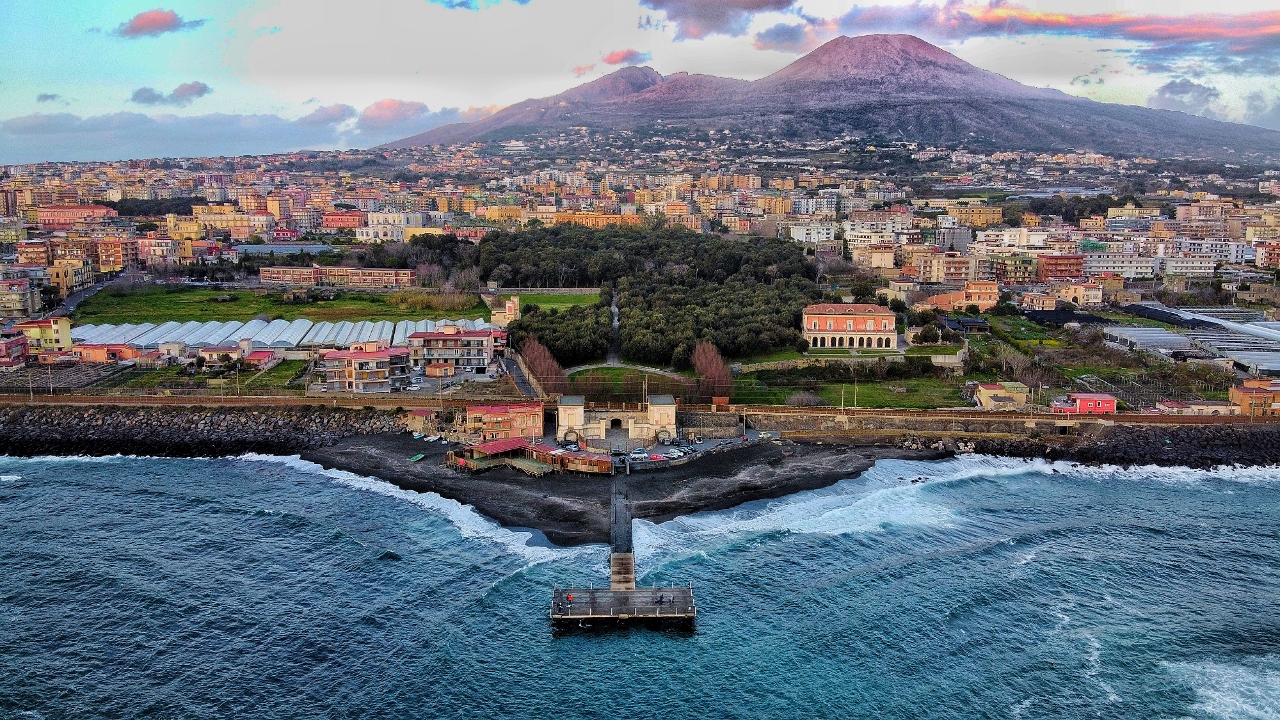Sudden Volcanoes, Unstable Ground, and Sublime Rocks: Welcome to the Mediterranean

On this day in 1538, a brand-new volcano popped up on the coast of Campania, swallowed the village of Tripergole whole, and pretty much ruined the region’s medical spa industry. And that’s just one of the many astounding things geology has done in the Mediterranean region.
Geology shapes civilization everywhere. The foods we grow, water we drink, materials we build with, views we enjoy, even the character of the air we breathe are all in some way constrained by geologic processes. That truth is on magnificent, sometimes terrifying, display throughout all of the lands surrounding this wine-dark sea. The Mediterranean isn’t particularly large, but colliding plates have ensured that an enormous variety of gorgeous scenery, fertile lands, magnificent mountains, lush valleys, seaside deserts, and gnarly natural disasters are all presented in grand form.
The humans who have lived here for thousands of years, enjoying its bounty and enduring its disasters, have kept a nearly unbroken record over the past several thousand years. In words, in artifacts, in the rise and fall of empires, in the patterns of their lives, they show us how earth processes play an enormous role in who we are and how we live – and sometimes how we die.
Many of us associate the Mediterranean with Greece and Rome, but it’s so much more. Its coasts stretch from the Atlantic to the Middle East, from southern Europe to Northern Africa. Its human history spans over 100,000 years and includes empires as diverse as the Phoenician and the Ottoman. Its geologic history goes back over nearly 200 million years and includes ancestor oceans born in the endless dance of tectonic plates.
 The Mediterranean Region. Credit: Dana Hunter
The Mediterranean Region. Credit: Dana Hunter
Those plates continue a complex waltz in the Mediterranean today, giving rise to soaring mountains, vigorous volcanoes, and powerful earthquakes. The same forces that provided saltwater highways for early empires, hot springs for medicinal baths, fertile soils for vineyards and farms, endless varieties of stone for building, and phenomenal scenery that inspired outstanding art also destroyed countless civilizations. This is one of the most beautiful, productive places on Earth to live. It’s also one of the most dangerous.
We’re going to spend the next year or few exploring this incredible region in depth. We’ll be able to see nearly every geologic process on the planet demonstrated, and see how geology affects human civilizations in ways you may have never considered. On my sister blog, we’ll explore the human history of the region, and enjoy some really neat fiction set in it. This is going to be a vast amount of fun!
Our journey begins one night in Campania, when the land split from sea to shore and stuffed an entire volcano right into a village…
 Monte Nuovo volcano, on Italy’s Campanian coast. Credit: yiftah-s (CC BY-SA 3.0)
Monte Nuovo volcano, on Italy’s Campanian coast. Credit: yiftah-s (CC BY-SA 3.0)

Rosetta Stones and Dana Hunter’s Unconformity wouldn’t be possible without you! If you like my content, there are many ways to show your support.

![]()

This website is a member of the Amazon Affiliates program. I get a small commission when you use my affiliate link to make a purchase.
Thank you so much for your support!


[…] for Rosetta Stones, and also the 482nd anniversary of the birth of Monte Nuovo. Come join me for the launch of our Mediterranean Geology series! We’ve got some truly magnificent geology ahead of […]